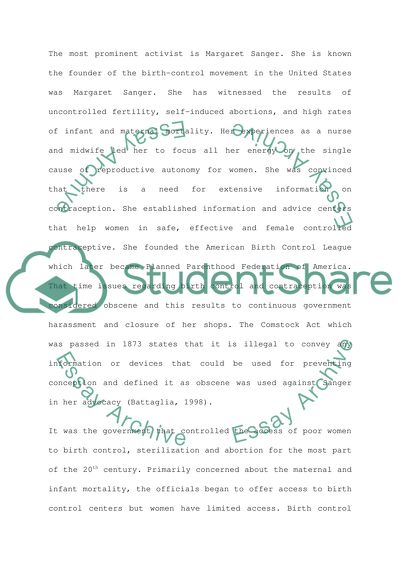Cite this document
(Birth Control Movement in the United States Essay Example | Topics and Well Written Essays - 1250 words, n.d.)
Birth Control Movement in the United States Essay Example | Topics and Well Written Essays - 1250 words. https://studentshare.org/gender-sexual-studies/1508916-to-what-extent-does-disparity-exist-with-the-legalization-of-the-birth-control-movement-in-regards-to-poor-and-minority-women-in-the-united-states
Birth Control Movement in the United States Essay Example | Topics and Well Written Essays - 1250 words. https://studentshare.org/gender-sexual-studies/1508916-to-what-extent-does-disparity-exist-with-the-legalization-of-the-birth-control-movement-in-regards-to-poor-and-minority-women-in-the-united-states
(Birth Control Movement in the United States Essay Example | Topics and Well Written Essays - 1250 Words)
Birth Control Movement in the United States Essay Example | Topics and Well Written Essays - 1250 Words. https://studentshare.org/gender-sexual-studies/1508916-to-what-extent-does-disparity-exist-with-the-legalization-of-the-birth-control-movement-in-regards-to-poor-and-minority-women-in-the-united-states.
Birth Control Movement in the United States Essay Example | Topics and Well Written Essays - 1250 Words. https://studentshare.org/gender-sexual-studies/1508916-to-what-extent-does-disparity-exist-with-the-legalization-of-the-birth-control-movement-in-regards-to-poor-and-minority-women-in-the-united-states.
“Birth Control Movement in the United States Essay Example | Topics and Well Written Essays - 1250 Words”. https://studentshare.org/gender-sexual-studies/1508916-to-what-extent-does-disparity-exist-with-the-legalization-of-the-birth-control-movement-in-regards-to-poor-and-minority-women-in-the-united-states.


